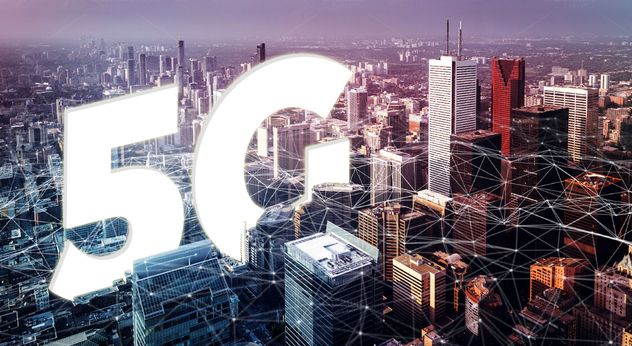
Jump To Section
Is the MVP approach becoming irrelevant?
The Minimum Viable Product approach (or MVP approach) for launching and scaling products has long been used by companies. But these days, you’ll see more MVPs failing to deliver on their promise.
And that happens because the core focus is still on the minimum viable PRODUCT and not the minimum viable EXPERIENCE of the customer or user.
That’s not to discredit the benefits of building an MVP lean product. The approach still:
- Is the quickest way to get feedback on your product idea and iterate to scale
- Helps minimize the risk of effort when compared to a product with all the intended features
- Aims to maximize the feedback from the customers with the LEAST effort.
So what’s wrong with it?
Why is the Minimum Viable Product NOT Viable Anymore?

The usual approach for most companies is to work backward from their grand product vision by delivering a major part of the desired product. However, this minimum viable product approach doesn’t work anymore and is becoming irrelevant due to several factors:
Saturated Competition in Most Markets
Whether it is the food delivery space or the ride-hailing market, competition is tough. Customers are more willing — and quicker — to switch for a better feature or customer experience. A great example of this is how a new player in the ride-hailing market called ‘InDriver’ has been able to capture the majority share by offering users the ability to negotiate a fare with the driver. Competitors like this make it tough for companies to stand out from the crowd and acquire customers.
Customers’ Patience is Diminishing
For digital products, it is much easier to build and get your product in the hands of customers as the distribution costs are extremely low and acquiring customers is easy. However, the problem with this approach is that you can also lose customers just as fast. Customers these days are switching to faster and better competition for a better user experience than they currently have.
Preference for Experience Over Features
It is getting trickier to succeed with the minimum viable product approach as customers are less willing to stick around for just the functionalities and features of a product alone — and that is all the MVP focuses on. The MVP approach revolves around building a great product with the least features, but to make MVPs succeed, a lot more is needed to be packaged with the product to make customers stay, like complete customer journey mapping for one of the features being used, or a full-blown product catalog. MVPs generally succeed when they have an engaged user base that is willing to live with a satisfactory user experience and missing features in order to have a clear roadmap of improvement and feature launches that they want from your MVP.
Failure to Build Desirable Brand Experiences
The minimum viable product approach is also failing these days as most MVPs that are being pushed into the market generally have a degraded brand experience. Tech companies, for example, focus on putting out innovative features faster so they can keep their targeted user base of early adopters engaged. In doing so, they often fail in acquiring early and late majority users because they fall short in building a desirable brand experience around their products, since their core focus is always on shipping the features.
Enter: The Minimum Viable Experience (MVE)
Where the MVP fails to account for the user experience, building a Minimum Viable Experience comes in.
The MVE approach focuses on the whole customer experience. At its core, MVE looks at the experience of your users/customers, either with a replacement or with an existing product. It asks the very important question of “what is the minimum experience we can deliver that will still satisfy our customers?”

Creating a minimum viable experience revolves around an end-to-end experience that resonates with the customer. It is akin to a full-stack effort: all elements like brand position, marketing, and experience design thinking are in place to give early customers a great reason to try the product and get excited about it.
The following chart explains the key elements of creating a successful Minimum Viable Experience, capturing the augmented emotional value as the experience matures:

Minimum Viable Product Vs Minimum Viable Experience
In the minimum viable product approach, the product is launched faster and iterations are super fast as well.
But customers want products that specifically fulfill their personalized needs — and this is the driving factor when engaging with early adopters, who will essentially convert into influencers for your brand. That’s why the Minimum Viable Experience vs traditional MVP argument is gaining so much traction these days.
It’s not like product managers following the MVP approach don’t try to address all possible customer touchpoints. The problem is that all these touchpoints typically reside within the product. Therefore, the experience that a user gains from the product is limited to only one channel: the product, which itself is already at its minimum viability. However, this may not prove enough to satisfy the unique needs of modern users, which will ultimately impact the experience they derive from the product.

To acquire early adopters and offer an experience that transforms them into advocates, these touchpoints need to extend beyond the main channel (or product). For example, leveraging social media channels, apps, helpdesks, and so forth to address a user’s product queries is a more effective way to address their need than a silo of information within the product.
This is where the MVE approach proves most effective. It can not only meet user needs, but also help to capture useful metrics, analytics, behavior, and use it to keep evaluating the product and improving MVE.
MVE In Action
If we take a look at recent successful start-ups, one thing a lot of them will have in common is a core focus on the customer experience. A significant instance of this can be seen in the fintech space, where new companies are focusing on building a great customer experience around handling money by introducing convenient features that customers have been looking for all this time.
The international money transfer app, Wise, which has a target market for freelancers earning foreign currency or remote workers, is a good minimum viable experience vs minimum viable product example. Customers can avail special exchange rates and minimal transaction fees as well as the ability to have an official account number or routing number in any country they want. This kind of experience has helped Wise quickly rise to the top of the international money transfer app market because it focused on the core needs of its target market and on offering a good customer experience around that.
Their winning strategy? A deep focus on building the experience around essential money transfer features; instead of shipping the most features required for a money transfer app, they focused on creating a USP by doing the essential features in the best way.
Takeaway
In the age of digital startups, if you lose focus from your customers and fail to understand their preferences and expectations from digital experiences, this article should be enough to show you how you’re missing out by not giving them the seamless user experience they wish to see.
Fortunately, the MVE approach serves as a tool that you can use to understand your customers better and focus on building features that matter most to the customers, and the successful companies of today are doing just that.
Amongst the biggest companies that have adopted and succeeded with the MVE approach is Apple, which is well-known for introducing features quite later than the competition but always providing augmented value to their customers solely through user experience.
Have you tried building products using the MVE approach yet? If not, now’s a better time than any to get started because your customers will continue to put the user experience above the actual functionality of the product.
Get in touch today to learn more about building the perfect MVE.
Frequently Asked Questions
What is the purpose of a minimum viable product?
A product built around the MVP approach is intended to validate the product idea and attract early adopters very early in the product life cycle.
What is MVP in product management?
MVPs are designed with enough features and functionality to attract users before launching the full-scale product, offering a better idea of product success early on.
What is a good minimum viable product example?
Jeff Bezos initially founded Amazon as an online bookstore, which helped to validate the e-commerce purpose before it began transforming into the e-commerce giant it is today.
Why do MVPs fail?
Sub-par UX, ineffective pricing, addressing the wrong problem, and the presence of competing products can lead to MVP failure.
What is an MVE?
The MVE approach prioritizes user experience over functionality, aiming to create advocates among early adopters.
Is MVP, MVE, or MAP the best approach?
MVP, MVE, and MAP (Minimum Awesome Product) are all lean development approaches. MVP places a greater emphasis on features, while MVE gives more weight to user experience. MAP borrows elements from both MVP and MVE to create products that customers will refer to as “awesome”.



